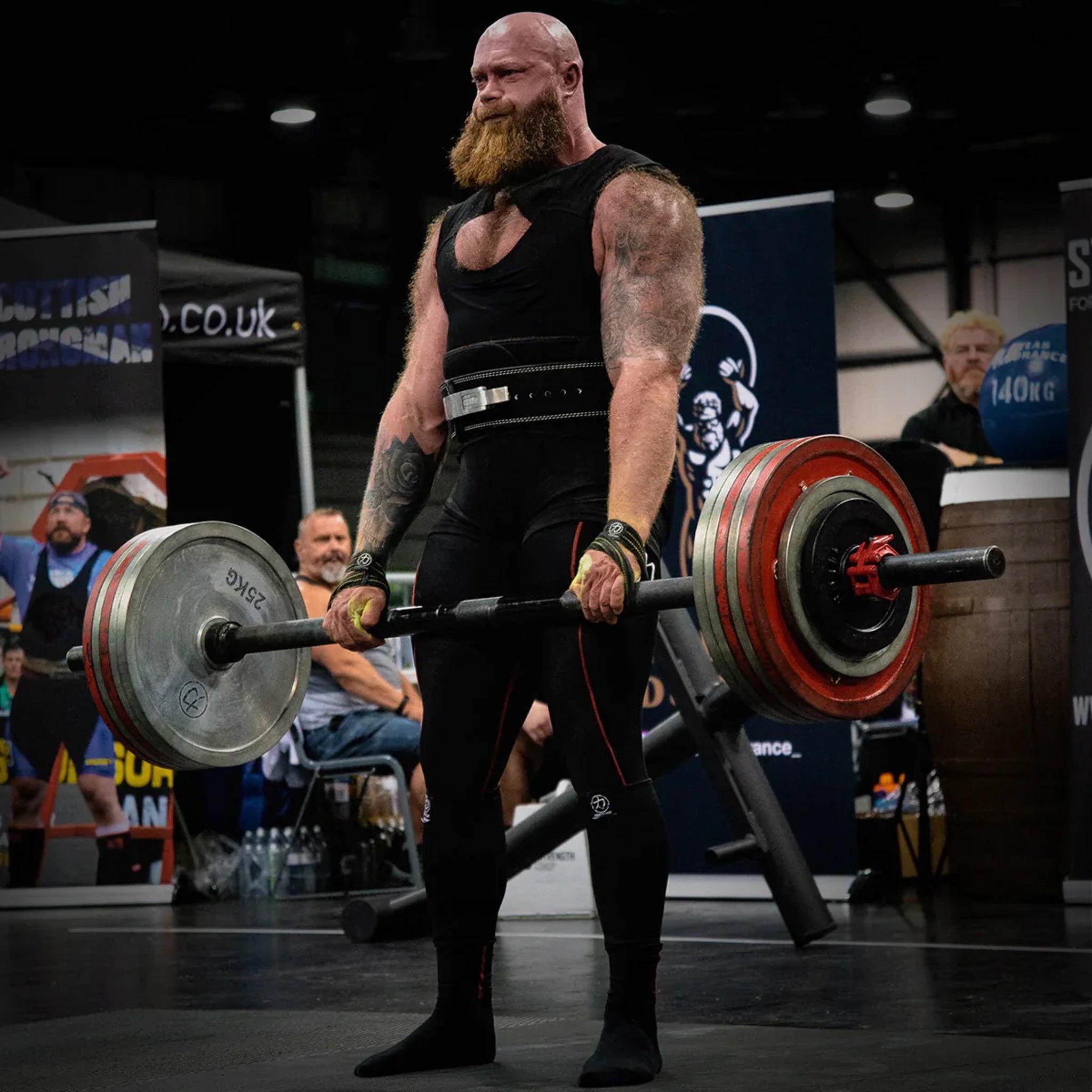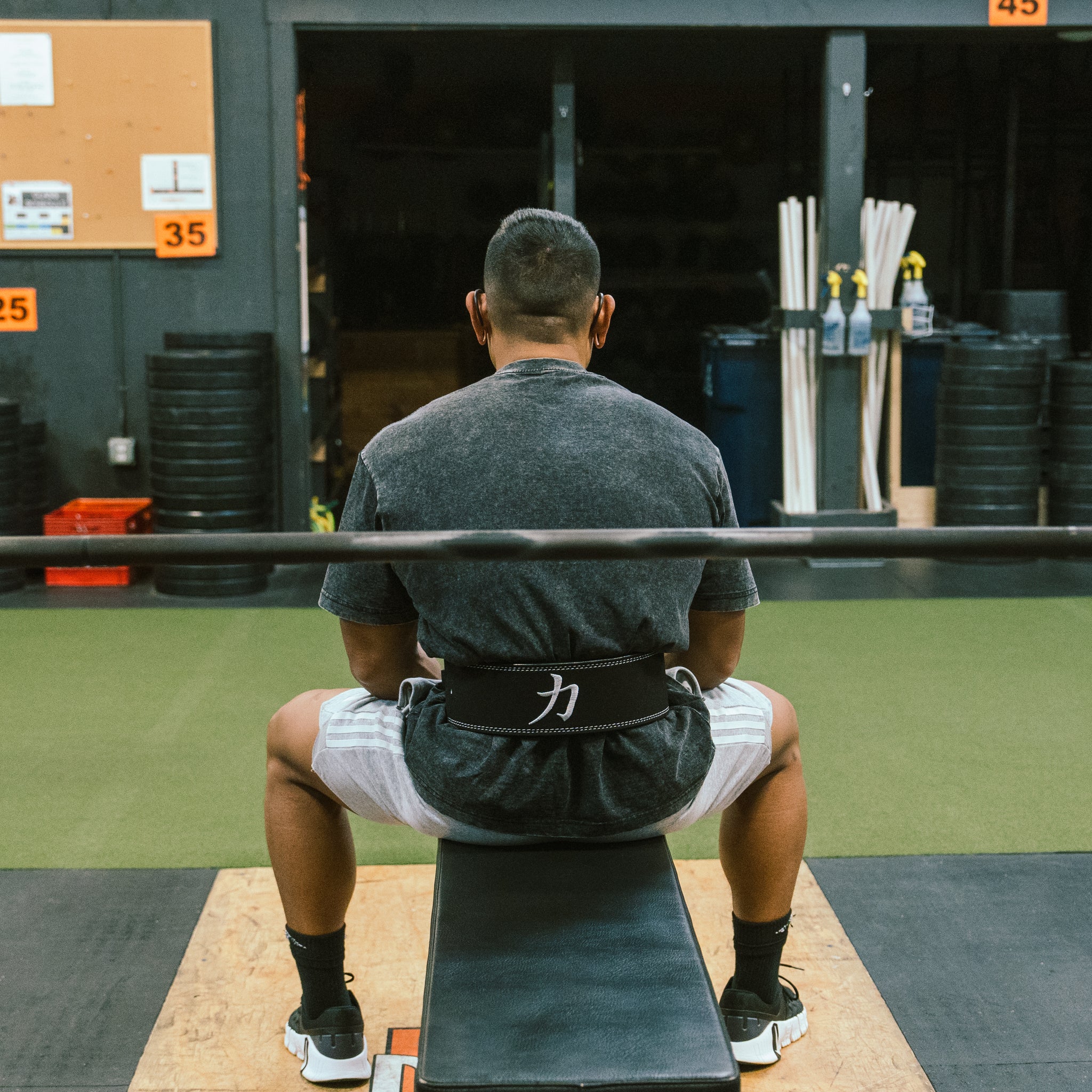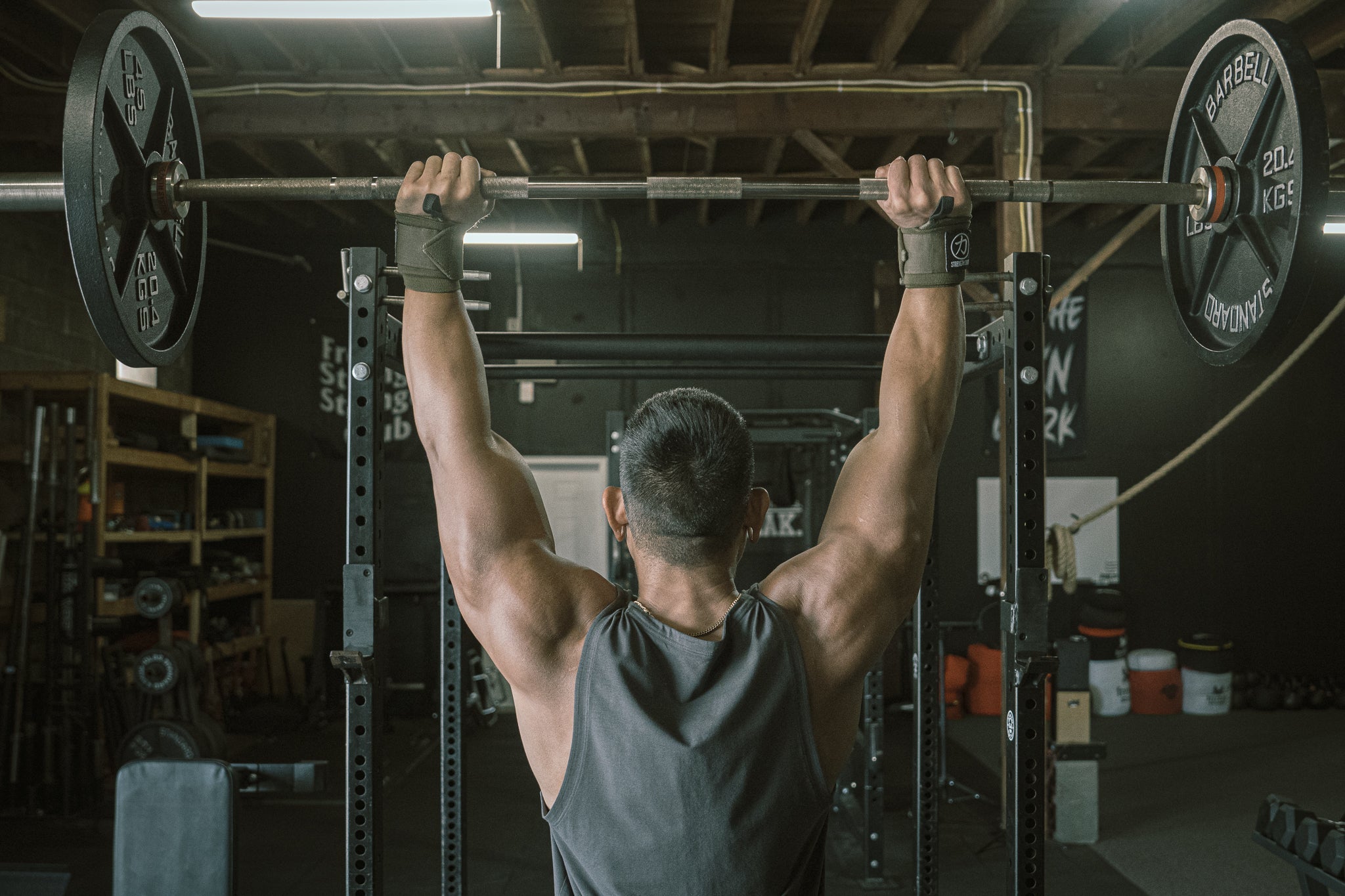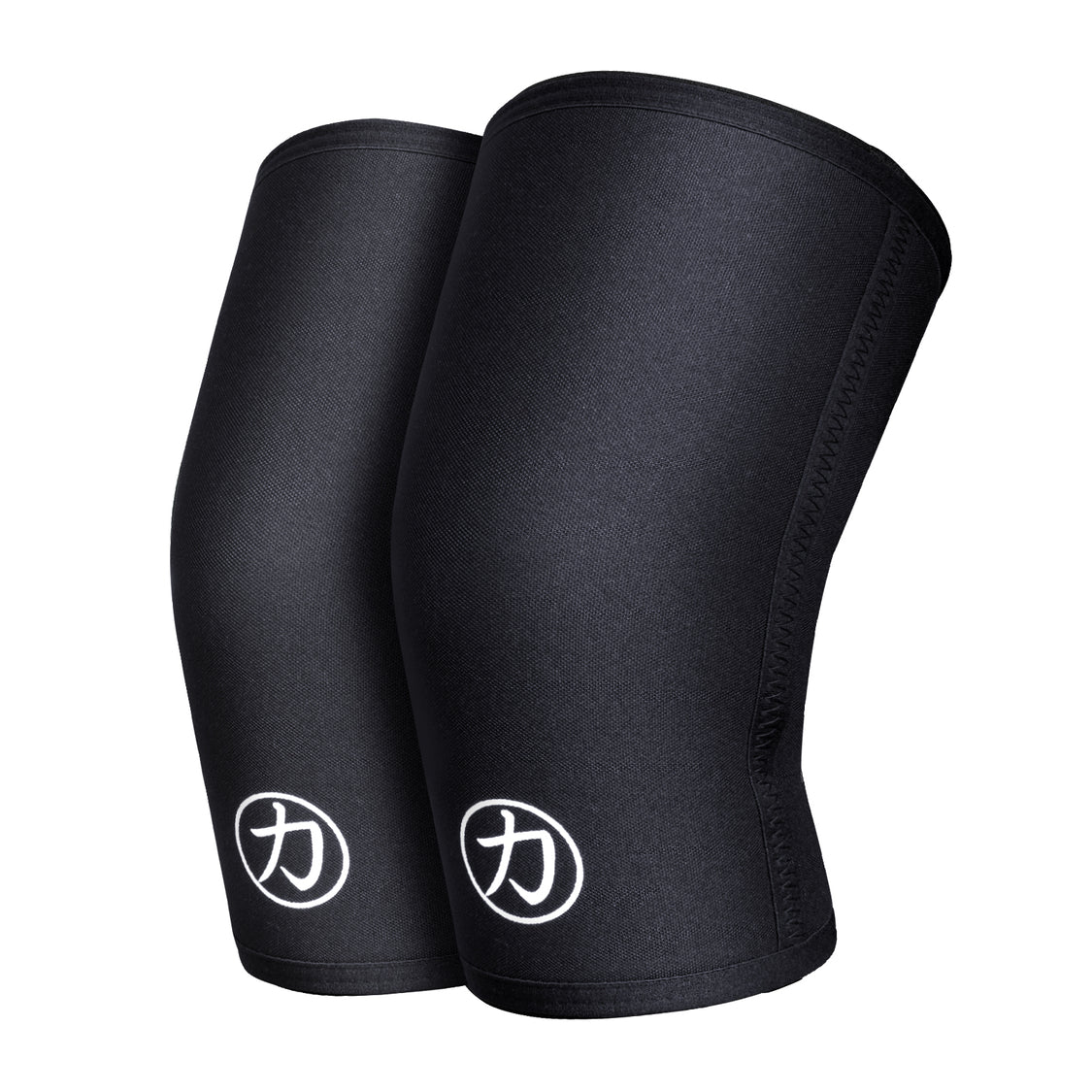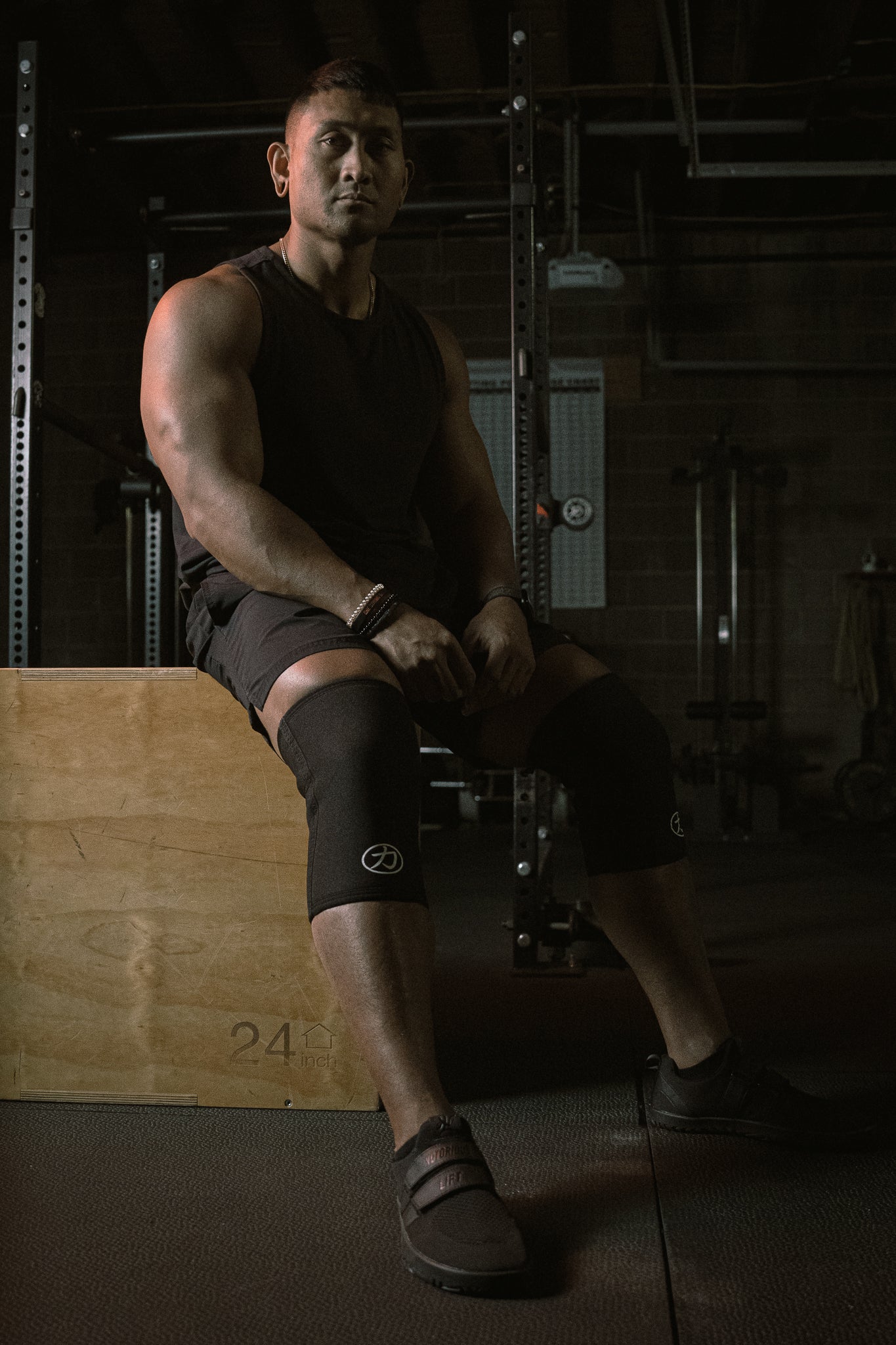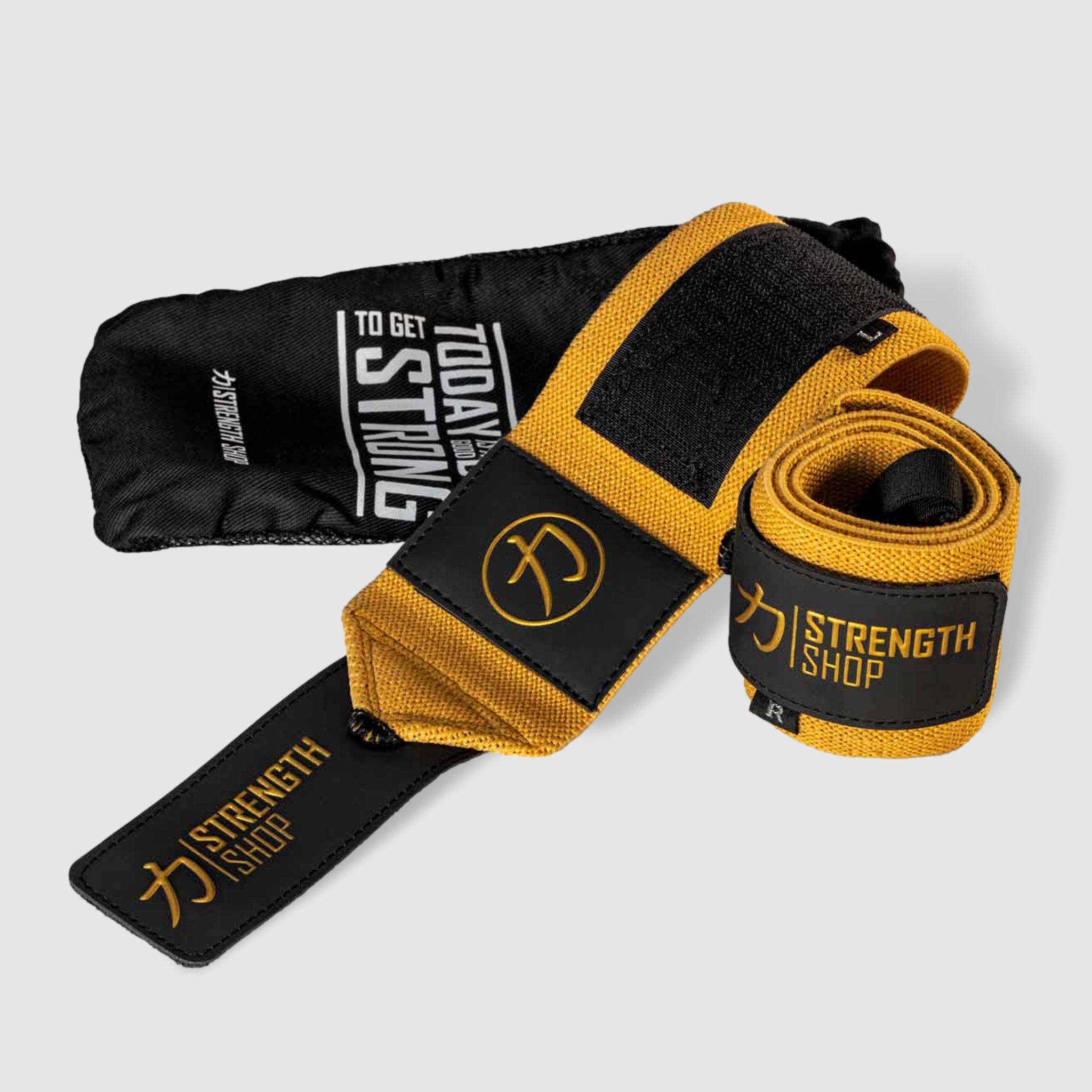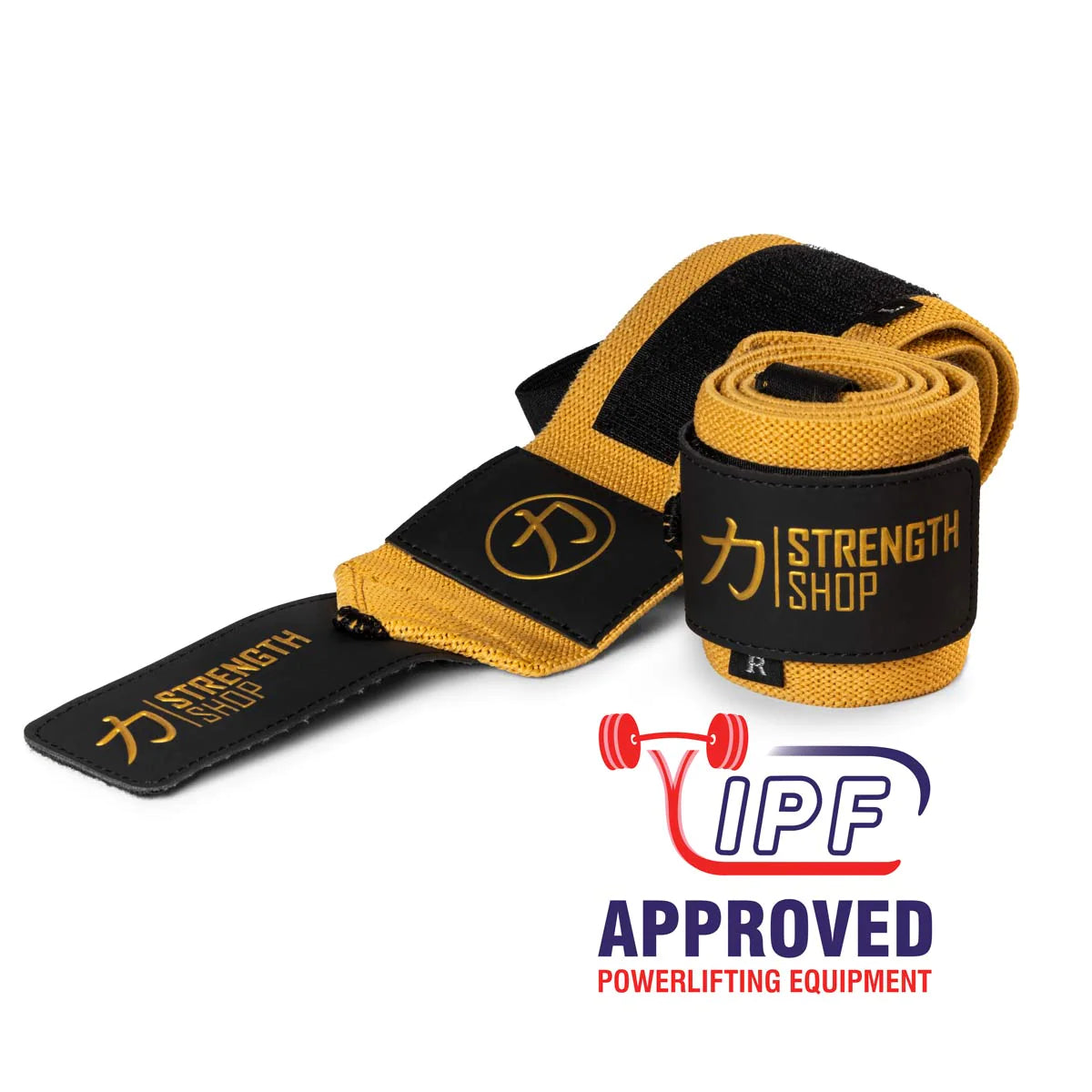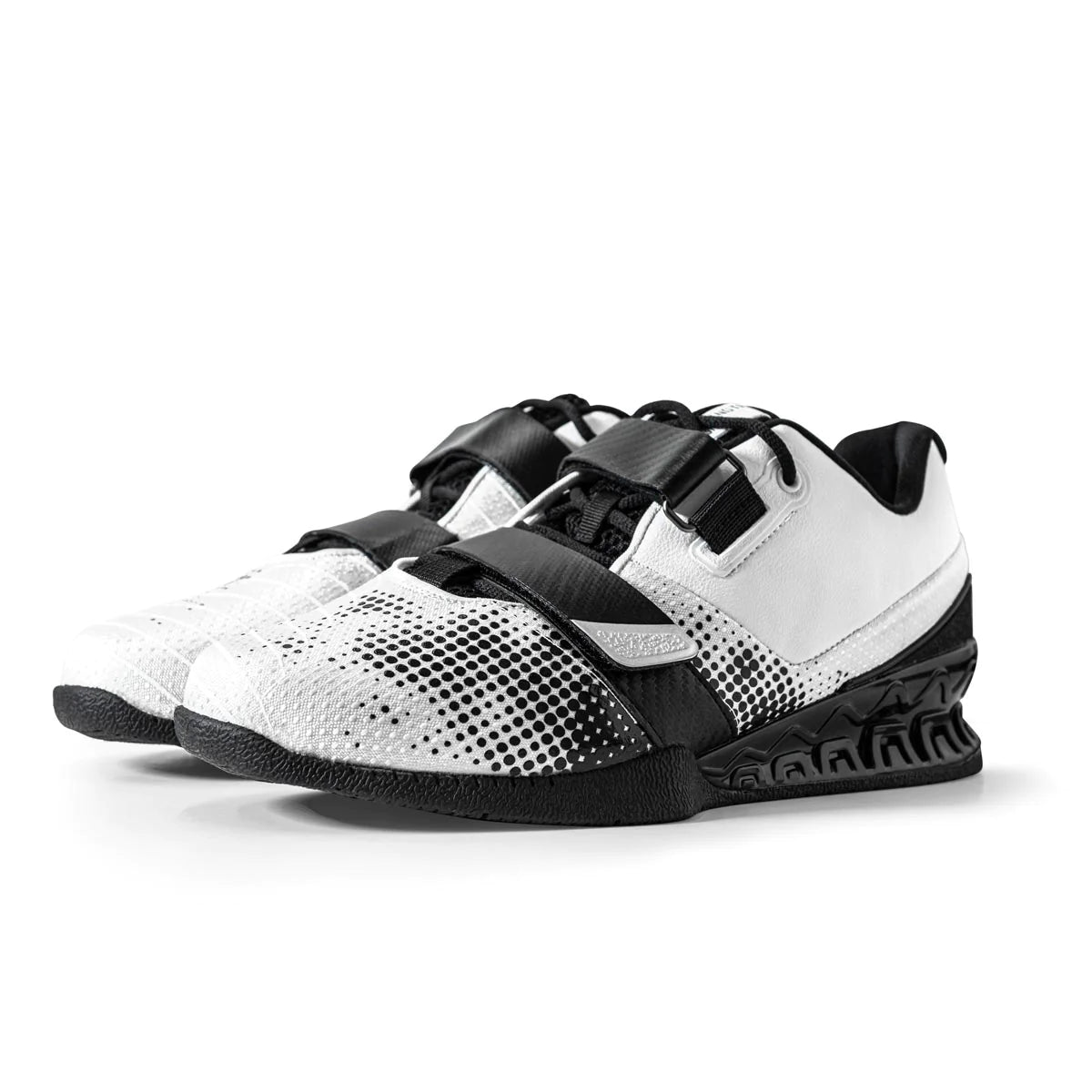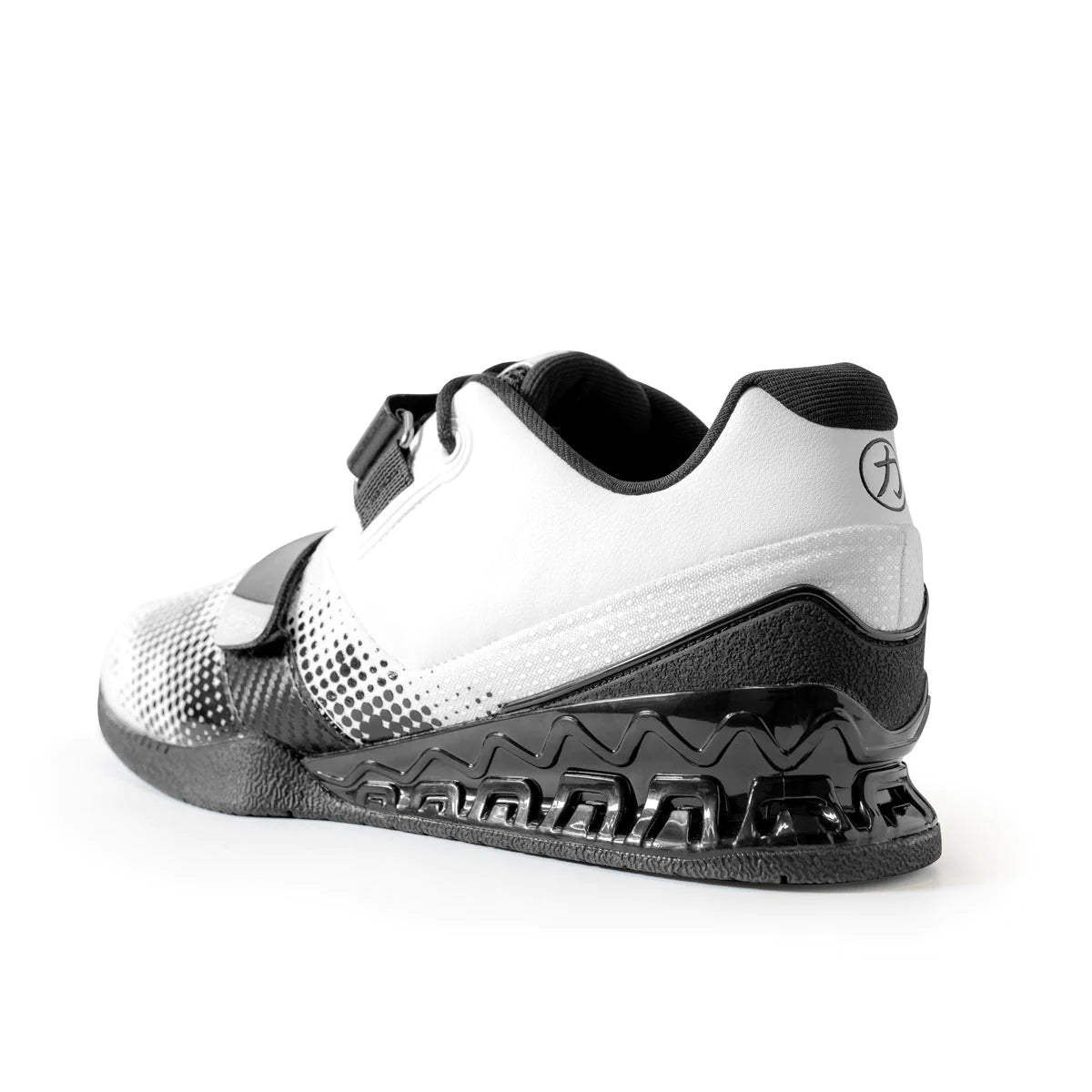Understanding why and how to use a powerlifting belt is crucial to lifting heavier weights and training safely. A belt can provide core stability, protect your spine, and improve your performance, but only if you use it correctly and for the right reasons. As experts in manufacturing weightlifting belts, we have compiled the ultimate guide on incorporating a belt into your routine.
What Is a Lifting Belt?
A weightlifting belt is a supportive equipment designed to protect your spine and improve your performance during heavy compound lifts. Powerlifters commonly use lifting belts for squats, overhead presses, and deadlifts. The belt stabilizes your core by providing a firm surface for your abdominal muscles to push against.
Most lifting belts are about 4 inches (10 cm) wide and 6-13 mm thick. They have adjustable closures, such as prongs or levers, for a secure and personalized fit. Manufacturers also create women's lifting belts explicitly designed to provide a more comfortable fit tailored to women's anatomy.
Manufacturers typically make lifting belts from two primary materials:
-
Leather lifting belts: Durable and rigid, these belts are perfect for heavy, static lifts like squats and deadlifts, where maximum support is needed.
-
Nylon lifting belts: Lightweight and flexible, nylon belts are ideal for dynamic movements or CrossFit-style workouts that require greater mobility.
How Does a Weightlifting Belt Work?
A weightlifting belt increases intra-abdominal pressure, stabilizes the spine, and improves lifting mechanics. It acts like a corset, giving your core muscles something firm to brace against helping you maintain a neutral spine during heavy lifts.
Wearing a belt also promotes proper bracing by encouraging you to take a deep belly breath and fully engage your core. This enhances your stability and body awareness, giving you better control and precision during each lift.
If you want added security when using a belt, consider pairing your lifting belt with weightlifting shoes to improve your stability, knee sleeves to protect your joints, and wrist wraps for added grip during front or overhead squats. These accessories stabilize your core, protect your body, and help you maintain proper form under heavy loads.
Why Use a Lifting Belt?
A lifting belt helps you train smarter and lift heavier by stabilizing your core, protecting your spine, and keeping you safe during heavy lifts. Whether aiming to improve your performance, prevent injuries, or fine-tune your lifting mechanics, a belt can be a game-changer in reaching your strength goals. Here are some reasons to use a lifting belt.
To Improve Your Core Stability and Strength
A lifting belt stabilizes your core by increasing intra-abdominal pressure, creating a natural brace for your spine. This bracing system activates your abdominal muscles, obliques, and erector spinae, helping you stay strong and steady under heavy loads, including lifts with accommodated resistance. The belt also makes you feel more secure, giving you a mechanical advantage during demanding lifts.
To Improve Your Performance During Heavy Lifts
A lifting belt lets you generate more power and maintain better control during intense lifts. With its structural support, you can focus on technique and optimize muscle recruitment patterns. A belt can also boost your confidence, helping you tackle challenging movements easily.
If competing, you can pair the belt with a powerlifting singlet or an AIRWAAV mouthpiece to maximize your stability, protection, and performance.
To Reduce Stress on Your Lower Back
When lifting heavy weights, the increased intra-abdominal pressure a belt provides reduces compressive forces on your spine. It reduces spinal compression by supporting proper form and keeping your spine aligned.
A lifting belt can also reduce your risk of lower back injuries. It can offer the extra protection you need to train safely if you've ever felt strain on your lower back during lifts.
To Prevent Injuries Under Heavy Loads
One of the biggest reasons to use a lifting belt is injury prevention. By limiting excessive spinal movement and providing external support to your core muscles, a belt helps you maintain consistent form even when fatigue sets in.
This added support protects your spine and promotes longevity in strength sports, contributing to your strongman life expectancy by reducing your risk of career-ending injuries. It supports a neutral spine, reduces trunk flexion, and solidifies lifting mechanics, ensuring you stay safe during heavy efforts.
Tip: If you pair your belt with wrist wraps or lifting straps, you can further improve your stability or grip strength during heavy lifts.
How to Use a Lifting Belt Properly
Properly using a lifting belt ensures you get the most out of its support while maintaining comfort and safety during your lifts. It takes some practice, but following these steps will help you maximize its benefits and keep your training effective and safe.
1. Pick the Right Belt
-
Material: Choose leather for maximum stability during heavy lifts or nylon if you need more flexibility for dynamic movements.
-
Width and thickness: A 4-inch width and 10-13 mm thickness work well for most lifters and provide adequate support.
-
Closure type: Opt for prong belts for adjustability or lever belts for quick and secure fastening.
-
Fit: Ensure the belt fits snugly without restricting your range of motion or causing discomfort.
2. Position the Belt Correctly
-
Place the belt just above your hip bones and below your ribcage.
-
Center it evenly around your torso to provide equal support to your lower back and abdomen.
-
Adjust the belt to be snug but not restrict breathing or movement.
3. Tighten the Belt Properly
-
Tighten the belt enough to feel resistance when you brace, but not so tight that it's uncomfortable.
-
Test the fit by taking a deep belly breath. You should feel the belt press firmly against your core while you can still breathe and brace effectively.
4. Practice Bracing With the Belt
-
Take a deep breath into your belly, pushing your core against the belt.
-
Hold this tension throughout the lift to maintain your spinal stability and proper form.
-
Release the brace only after safely completing the lift.
When to Use a Lifting Belt
Knowing when to use a weightlifting belt helps you get the most out of it without becoming dependent. Here's when you can use your belt effectively:
-
For heavy lifts: Wear a belt with a secure weightlifting belt buckle when squatting at or above 75% of your one-rep max (1RM), as the added stability is most beneficial at this intensity.
-
For max effort attempts: If you're attempting a personal record (PR) or lifting near your maximum, a belt provides the extra support you need for safety and performance.
-
For advanced training: Use a belt as you progress to heavier weights or follow strength-focused programs to maintain your proper form under load.
-
If you have injury concerns: If you've experienced back issues, a belt can help reduce spinal stress and allow you to train more comfortably.
Here are summary tables to help you decide when to use a lifting belt during different training phases and scenarios:
|
Weight Percentage |
Belt Recommendation |
|---|---|
|
70-80% 1RM |
Recommended |
|
Below 70% 1RM |
Optional |
|
Above 85% 1RM |
Strongly recommended |
|
Lifting Scenario |
Belt Recommendation |
|
Squats |
When your squat matches or exceeds your body weight. |
|
Deadlifts |
When your deadlift approaches 1.5 times your body weight. |
|
Overhead Presses |
When pressing near your body weight. |
Pros and Cons of Using a Lifting Belt
Using a lifting belt can make a huge difference when pulling heavier weights. Still, it’s not always the right choice for every scenario. Let’s examine the pros and cons to help decide if a lifting belt aligns with your goals and training style.
Pros of Lifting Belts
There are many benefits of wearing lifting belts, especially during heavy lifts:
-
Increased core stability: A belt strengthens your core, helping you maintain a neutral spine and reducing your risk of injury.
-
Better lifting mechanics: It provides extra support, allowing you to focus on form and generate more power for a stronger pull off the ground.
-
Reduced spinal stress: By increasing intra-abdominal pressure, a belt redistributes the load across your torso, taking the strain off your lower back.
-
Enhanced confidence: The added stability and protection make you feel more secure handling heavier weights, helping you push your limits safely.
Cons of Lifting Belts
While lifting belts have their advantages, they also come with potential downsides:
-
Over-reliance: Using a belt too often can weaken your core by reducing your natural muscle engagement during lighter lifts.
-
Limited use for lighter lifts: Belts aren’t necessary for submaximal weights and might prevent you from developing proper bracing strength. They are limited in use for lighter lifts.
-
False security: A belt won’t save you if your form is off — it’s a tool to support good technique, not to replace it.
-
Comfort issues: If the belt doesn’t fit properly, it can pinch, restrict your breathing, or feel uncomfortable, potentially impacting your performance.
Common Mistakes to Avoid When Using a Lifting Belt
A lifting belt can enhance your performance only if you avoid common mistakes. Here’s what to watch out for:
-
Wearing the belt too high or too low: Position the belt above your hip bones and below your ribcage for proper support. Misplacement can limit its effectiveness and make people feel uncomfortable.
-
Over-tightening the belt: A belt should be snug but not overly tight. You need room to take a deep belly breath and brace properly.
-
Relying on the belt too early: Don’t use a belt as a shortcut. Master proper lifting form and core bracing first, or the belt won’t do much to help you.
-
Using the belt for every lift: Save the belt for heavy compound movements or max effort lifts. Overusing it can weaken your natural core strength.
When Not to Use Lifting Belts
A lifting belt is a great tool, but it’s unnecessary for every workout. Knowing when not to use a belt is just as important as understanding when to wear one. Here are some situations where you should skip the belt:
-
During light or warm-up sets: Avoid using a belt for lighter lifts under 75% of your 1RM. These sets are a great time to practice natural bracing and strengthen your core.
-
If you’re new to lifting: If you’re a beginner, you should focus on mastering technique and building a solid foundation of core strength before adding a belt. Using one too early can limit your progress.
-
For functional training: When improving real-world strength or athletic performance, train without a belt to develop natural core stability and control.
-
For accessory movements: Exercises like bicep curls or lateral raises don’t require a belt, as they don’t significantly strain your core or spine.
-
To avoid dependency: Overusing a belt can weaken your core over time. Reserve it for heavier lifts and focus on beltless training to maintain well-rounded core strength.
-
If you have a medical condition: Avoid belts if you have high blood pressure, respiratory issues, a hernia, abdominal injury, are pregnant, or recently had surgery. Always discuss your specific situation with your doctor.
Frequently Asked Questions
What is the purpose of using a lifting belt?
A lifting belt increases core stability, protects the spine, and enhances lifting performance by creating intra-abdominal pressure to reduce stress on the lower back during heavy lifts.
When should I start wearing a lifting belt?
Start using a lifting belt when lifting near 75% to 85% of your one-rep max (1RM), but ensure you’ve first developed proper form and core strength.
At what weight should I use a belt?
Use a belt when your squat matches your body weight, your deadlift approaches 1.5 times your body weight, or you’re lifting heavy in other compound exercises.
Why do weightlifters use lifting belts?
Weightlifters use lifting belts to stabilize their core, protect their spine, and maintain proper form, allowing them to lift heavier weights confidently.
When should you wear a lifting belt?
Wear a lifting belt for heavy compound exercises like squats, deadlifts, and overhead presses, especially at 75% to 85% of your one-rep max (1RM) or higher.
How do you properly use a lifting belt?
Position the belt above your hip bones, tighten it snugly, take a deep belly breath, brace your core against the belt, and maintain tension throughout the lift.
What exercises require a lifting belt?
A lifting belt is most useful for heavy compound lifts, such as squats, deadlifts, overhead presses, power cleans, and Olympic lifts, which involve high spinal and core stress.

